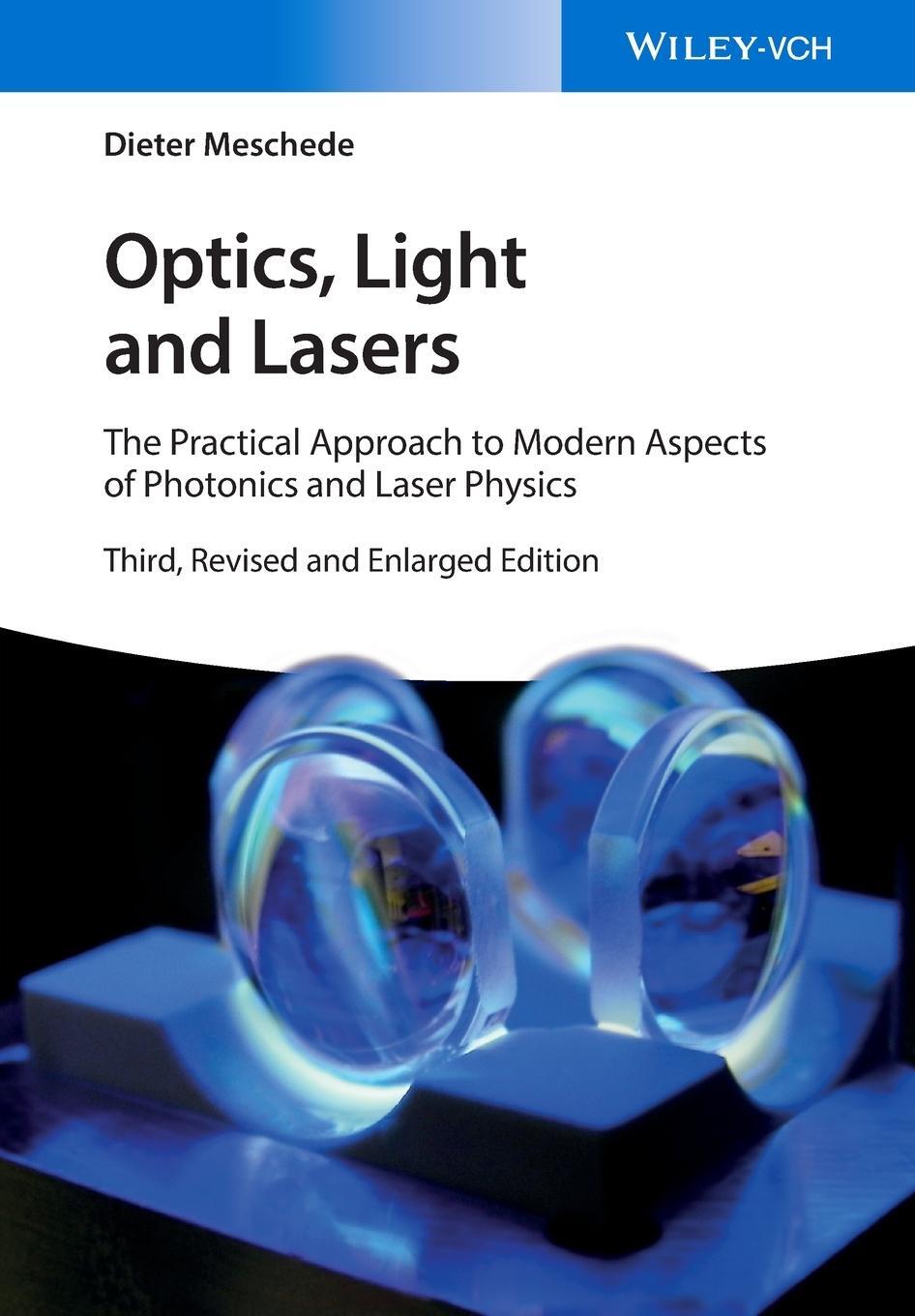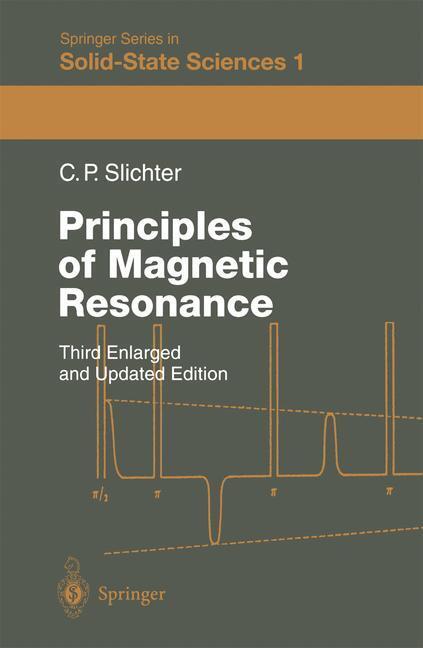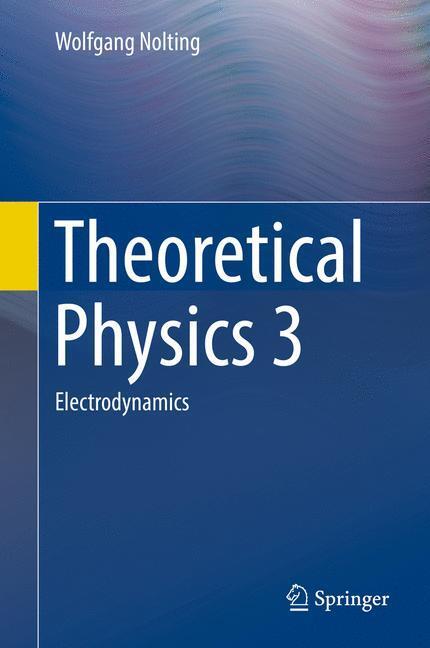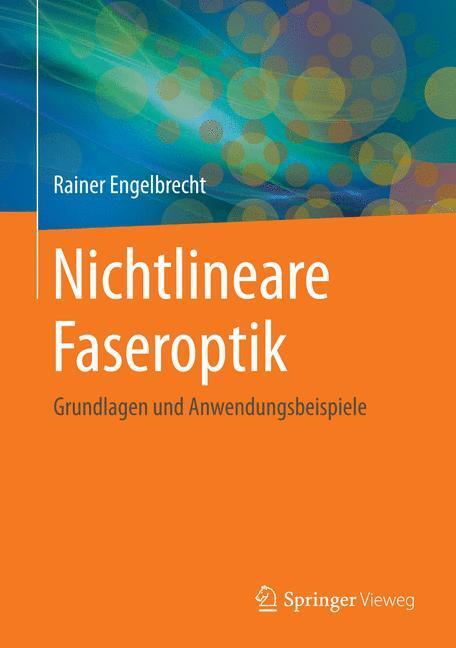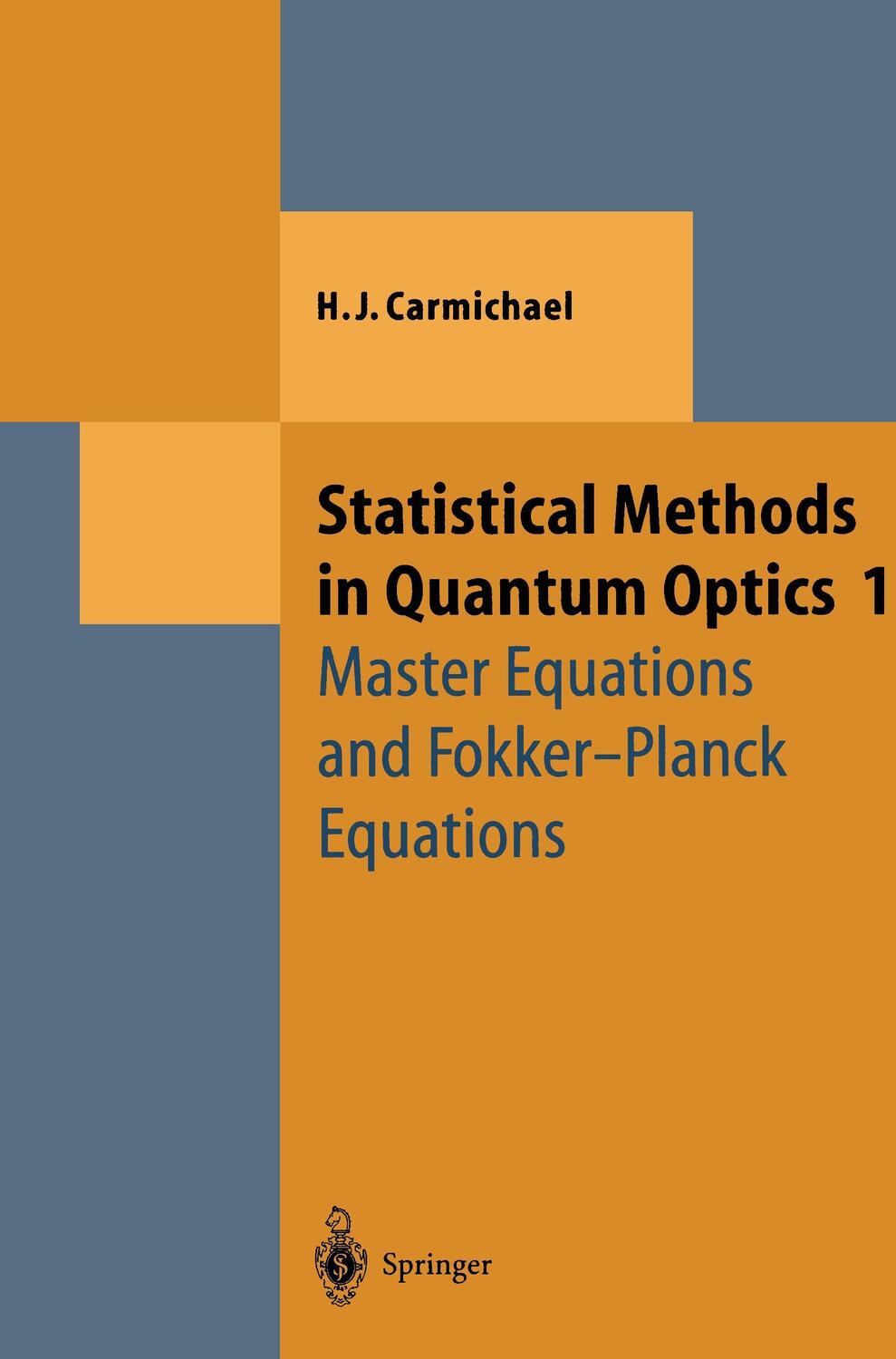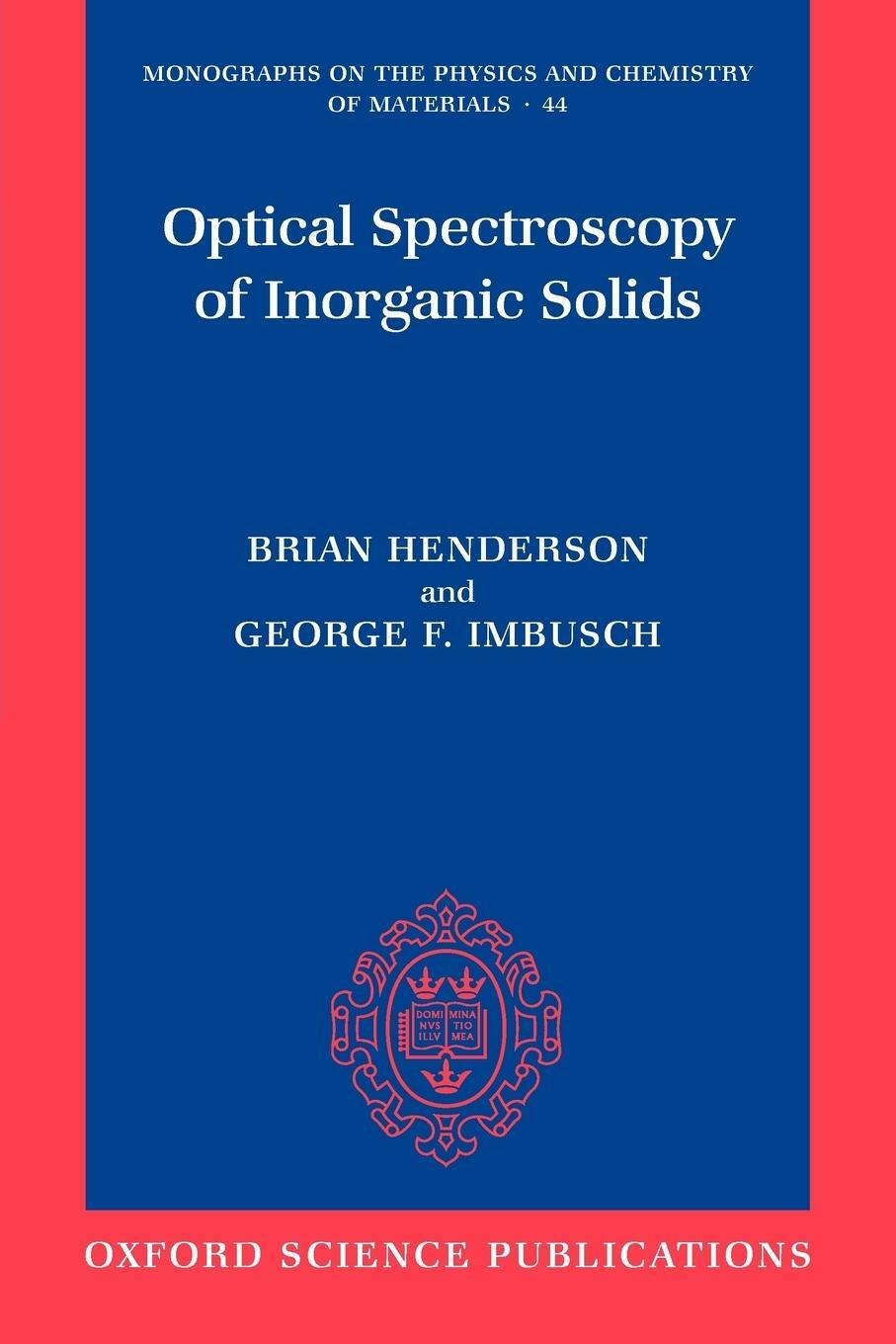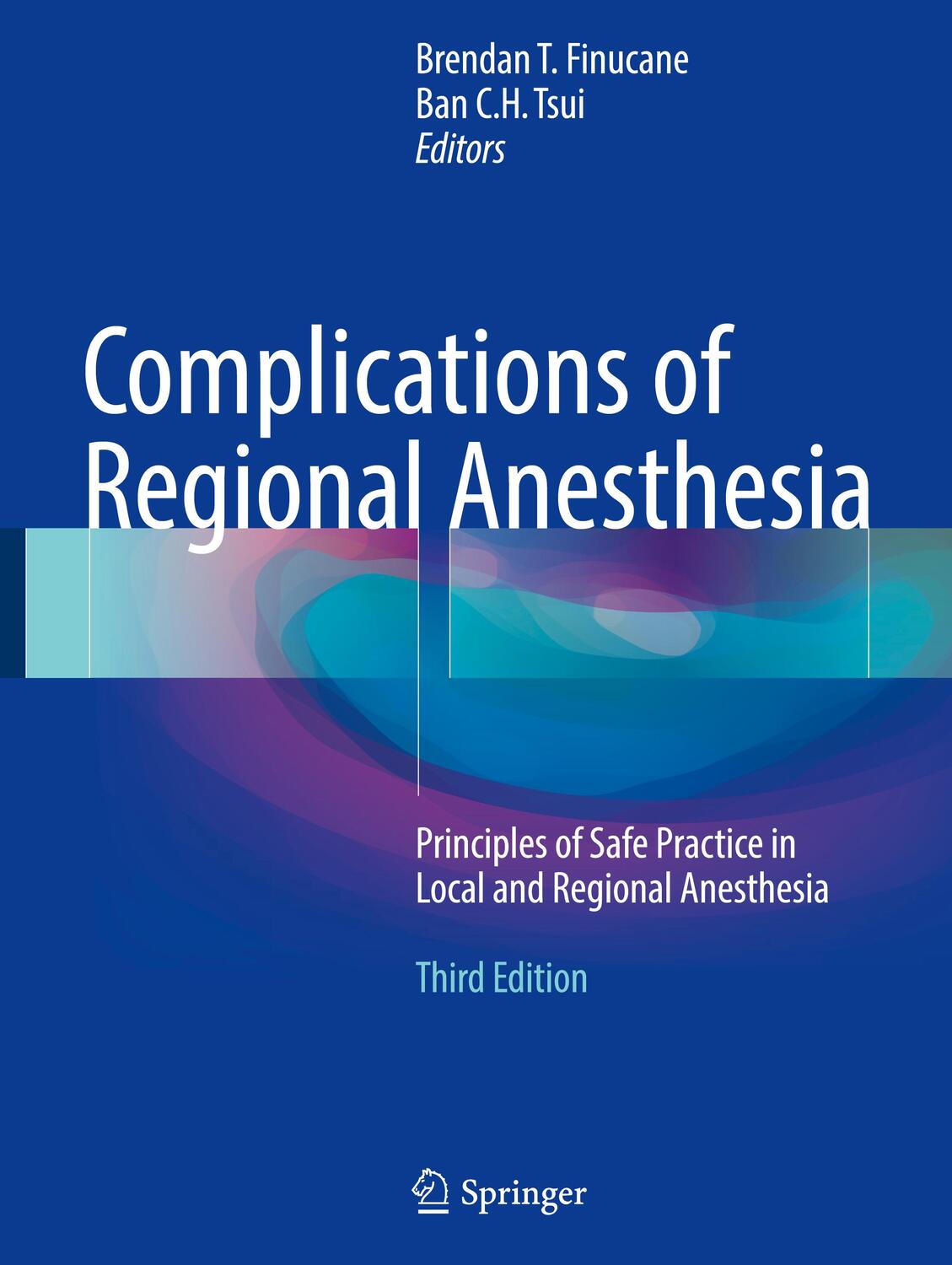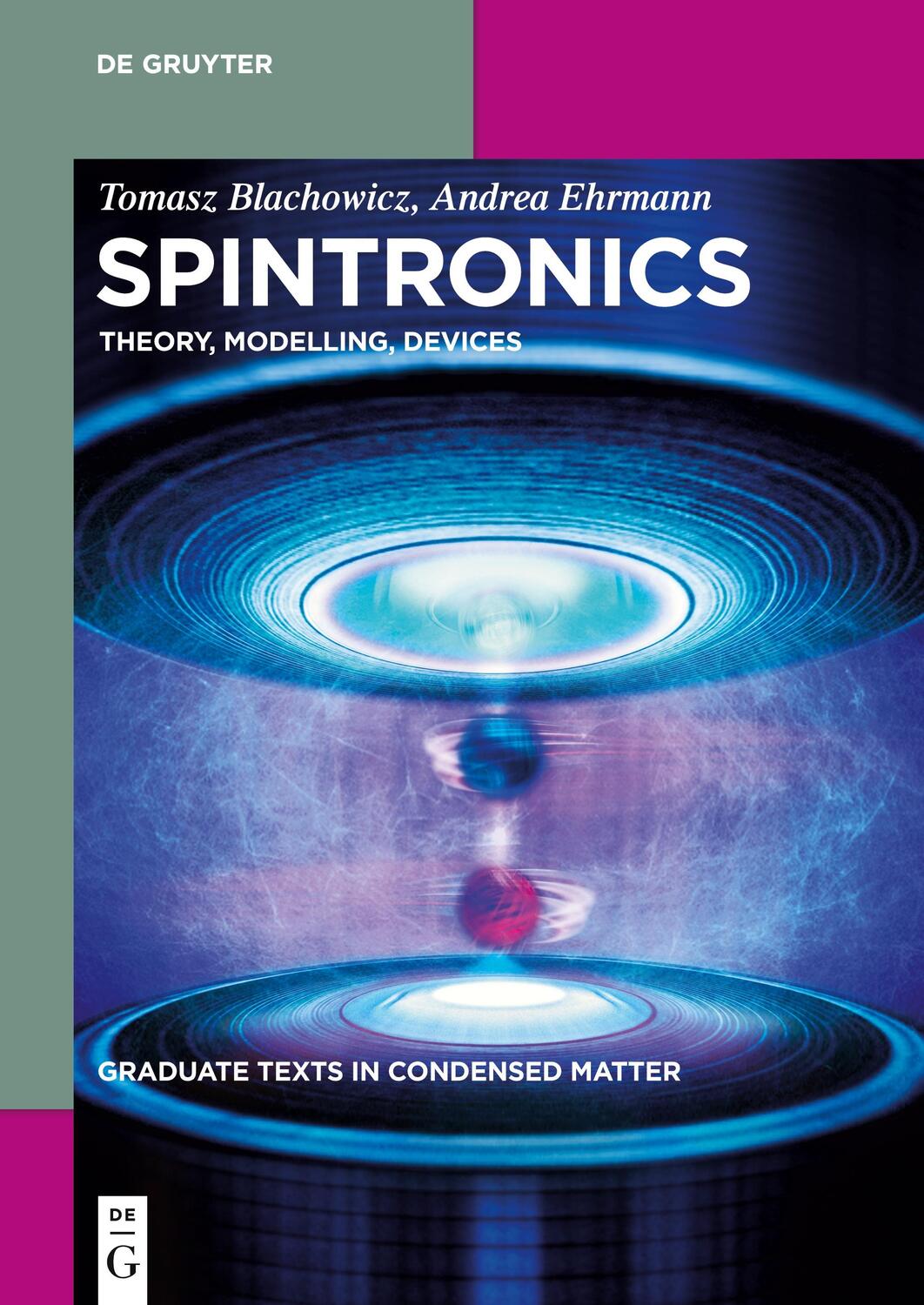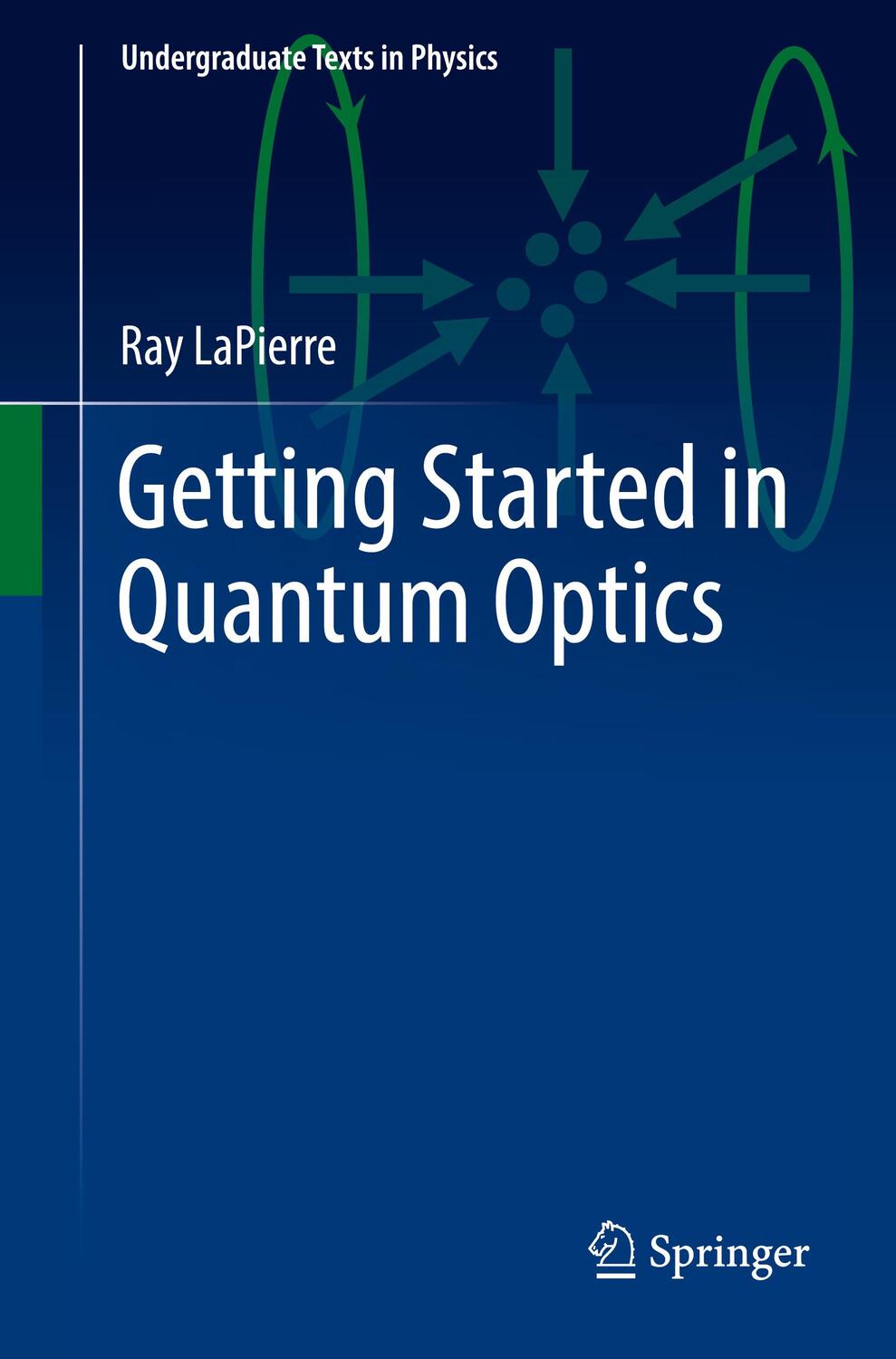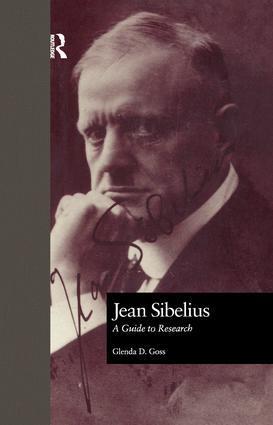Dekorationsartikel gehören nicht zum Leistungsumfang.
Sprache:
Englisch
111,95 €*
Versandkostenfrei per Post / DHL
auf Lager, Lieferzeit 1-2 Werktage
Kategorien:
Beschreibung
Dieses Buch ist genau richtig für Einsteiger in das Fachgebiet. Schwierige Effekte werden direkt und leicht verständlich präsentiert. Diese aktualisierte, erweiterte Auflage bietet neue Kapitel zu neuen Themen wie Plasmonik, Frequenzkämme auf Femto-Ebene und Quantenkaskadenlaser
Dieses Buch ist genau richtig für Einsteiger in das Fachgebiet. Schwierige Effekte werden direkt und leicht verständlich präsentiert. Diese aktualisierte, erweiterte Auflage bietet neue Kapitel zu neuen Themen wie Plasmonik, Frequenzkämme auf Femto-Ebene und Quantenkaskadenlaser
Über den Autor
Dieter Meschede studied physics in several places including Hannover, Cologne, Boulder, and Munich. He has been professor of experimental physics since 1990. At the University of Bonn his current scientific interests are directed towards light-matter interactions at the most elementary level, i.e. with single atoms and single photons for applications in quantum technology.
Inhaltsverzeichnis
1 Light rays.
1.1 Light rays in human experience.
1.2 Ray optics.
1.3 Reflection.
1.4 Refraction.
1.5 Fermat's principle: the optical path length.
1.6 Prisms.
1.7 Light rays in wave guides.
1.8 Lenses and curved mirrors.
*1.9. Autofocus
1.10 Matrix optics.
1.11 Ray optics and particle optics.
Problems for chapter 1.
2 Wave optics.
2.1 Electromagnetic radiation fields.
2.2 Wave types.
2.3 Gaussian beams.
Add: Collins integral
*2.3. Beyond Gaussian Beams
2.4 Polarization.
2.5 Diffraction.
Problems for chapter 2.
3 Light propagation in matter.
3.1 Dielectric interfaces.
3.2 Complex refractive index.
3.3 Optical wave guides and fibres.
3.4 Functional types and applications of optical fibres.
3.6 Photonic materials.
*NEW: Nano-Optis and Plasmonics
3.7 Light pulses in dispersive materials.
3.8 Anisotropic optical materials.
3.9 Optical modulators.
Problems for chapter 3.
4 Optical images.
4.1 The human eye.
4.2 Magnifying glass and eyepiece.
4.3 Microscopes.
4.4 Telescopes.
4.5 Lenses: designs and aberrations.
*4.6. Aspherical lenses
Problems for chapter 4.
5 Coherence and interferometry.
5.1 Young's double slit.
5.2 Coherence and correlation.
5.3 The double-slit experiment.
5.4 Michelson interferometer: longitudinal coherence.
5.5 Fabry-Perot interferometer.
5.6 Optical cavities.
*update: Microresonators
5.7 Thin optical films.
5.8 Holography.
5.9 Laser speckle (laser granulation).
Problems for chapter 5.
6 Light and matter.
6.1 Classical radiation interaction.
6.2 Two-level atoms.
6.3 Stimulated and spontaneous radiation processes.
6.4 Inversion and amplification.
Problems for chapter 6.
7 The laser.
7.1 The classic system: the He-Ne laser.
7.2 Mode selection in the He-Ne laser.
7.3 Spectral properties of the He-Ne laser.
7.4 Applications of the He-Ne laser.
7.5 Other gas lasers.
7.6 Molecular gas lasers.
7.7 The workhorses: solid-state lasers.
7.8 Selected solid-state lasers.
7.9 Tunable lasers with vibronic states.
7.10 Tunable ring lasers.
Problems for chapter 7.
8 Laser dynamics.
8.1 Basic laser theory.
8.2 Laser rate equations.
8.3 Threshold-less lasers and micro-lasers.
8.4 Laser noise.
8.5 Pulsed lasers.
*8.6. Femtocombs
Problems for chapter 8.
9 Semiconductor lasers.
9.1 Semiconductors.
9.2 Optical properties of semiconductors.
9.3 The heterostructure laser.
9.4 Dynamic properties of semiconductor lasers.
9.5 Laser diodes, diode lasers, laser systems.
9.6 High-power laser diodes.
*9.7 Quantum Cascade lasers + update
Problems for chapter 9.
10 Sensors for light.
10.1 Characteristics of optical detectors.
10.2 Fluctuating opto-electronic quantities.
10.3 Photon noise and detectivity limits.
10.4 Thermal detectors.
10.5 Quantum sensors I: photomultiplier tubes.
10.6 Quantum sensors II: semiconductor sensors.
10.7 Position and image sensors.
10.8. Superconducting detectors
Problems for chapter 10.
11 Laser spectroscopy.
11.1 Laser-induced fluorescence (LIF).
11.2 Absorption and dispersion.
11.3 The width of spectral lines.
11.4 Doppler-free spectroscopy.
11.5 Transient phenomena.
11.6 Light forces.
11.7. Remote Sensing, Trace gases, etc.
Problems for chapter 11.
12 Photons - an introduction to quantum optics.
12.1 Does light exhibit quantum character?
12.2 Quantization of the electromagnetic field.
12.3 Spontaneous emission.
12.4 Weak coupling and strong coupling.
12.5 Resonance fluorescence.
12.6 Light fields in quantum optics.
12.7 Two-photon optics.
12.8 Entangled photons.
*12.9 Quantum Communication
Problems for chapter 12.
13 Nonlinear optics I: optical mixing processes.
13.1 Charged anharmonic oscillators.
13.2 Second-order nonlinear susceptibility.
13.3 Wave propagation in nonlinear media.
13.4 Frequency doubling.
13.5 Sum and difference frequency.
13.6 Optical parametric oscillators.
Problems for chapter 13.
14 Nonlinear optics II: four-wave mixing.
14.1 Frequency tripling in gases.
14.2 Nonlinear refraction coefficient (optical Kerr effect).
*14.2 add: Z-Scan Method
14.3 Self-phase modulation.
Problems for chapter 14.
Appendix.
A Mathematics for optics.
A.1 Spectral analysis of fluctuating measurable quantities.
A.2 Poynting theorem.
B Supplements in quantum mechanics.
B.1 Temporal evolution of a two-state system.
B.2 Density-matrix formalism.
B.3 Density of states.
Bibliography.
Index.
1.1 Light rays in human experience.
1.2 Ray optics.
1.3 Reflection.
1.4 Refraction.
1.5 Fermat's principle: the optical path length.
1.6 Prisms.
1.7 Light rays in wave guides.
1.8 Lenses and curved mirrors.
*1.9. Autofocus
1.10 Matrix optics.
1.11 Ray optics and particle optics.
Problems for chapter 1.
2 Wave optics.
2.1 Electromagnetic radiation fields.
2.2 Wave types.
2.3 Gaussian beams.
Add: Collins integral
*2.3. Beyond Gaussian Beams
2.4 Polarization.
2.5 Diffraction.
Problems for chapter 2.
3 Light propagation in matter.
3.1 Dielectric interfaces.
3.2 Complex refractive index.
3.3 Optical wave guides and fibres.
3.4 Functional types and applications of optical fibres.
3.6 Photonic materials.
*NEW: Nano-Optis and Plasmonics
3.7 Light pulses in dispersive materials.
3.8 Anisotropic optical materials.
3.9 Optical modulators.
Problems for chapter 3.
4 Optical images.
4.1 The human eye.
4.2 Magnifying glass and eyepiece.
4.3 Microscopes.
4.4 Telescopes.
4.5 Lenses: designs and aberrations.
*4.6. Aspherical lenses
Problems for chapter 4.
5 Coherence and interferometry.
5.1 Young's double slit.
5.2 Coherence and correlation.
5.3 The double-slit experiment.
5.4 Michelson interferometer: longitudinal coherence.
5.5 Fabry-Perot interferometer.
5.6 Optical cavities.
*update: Microresonators
5.7 Thin optical films.
5.8 Holography.
5.9 Laser speckle (laser granulation).
Problems for chapter 5.
6 Light and matter.
6.1 Classical radiation interaction.
6.2 Two-level atoms.
6.3 Stimulated and spontaneous radiation processes.
6.4 Inversion and amplification.
Problems for chapter 6.
7 The laser.
7.1 The classic system: the He-Ne laser.
7.2 Mode selection in the He-Ne laser.
7.3 Spectral properties of the He-Ne laser.
7.4 Applications of the He-Ne laser.
7.5 Other gas lasers.
7.6 Molecular gas lasers.
7.7 The workhorses: solid-state lasers.
7.8 Selected solid-state lasers.
7.9 Tunable lasers with vibronic states.
7.10 Tunable ring lasers.
Problems for chapter 7.
8 Laser dynamics.
8.1 Basic laser theory.
8.2 Laser rate equations.
8.3 Threshold-less lasers and micro-lasers.
8.4 Laser noise.
8.5 Pulsed lasers.
*8.6. Femtocombs
Problems for chapter 8.
9 Semiconductor lasers.
9.1 Semiconductors.
9.2 Optical properties of semiconductors.
9.3 The heterostructure laser.
9.4 Dynamic properties of semiconductor lasers.
9.5 Laser diodes, diode lasers, laser systems.
9.6 High-power laser diodes.
*9.7 Quantum Cascade lasers + update
Problems for chapter 9.
10 Sensors for light.
10.1 Characteristics of optical detectors.
10.2 Fluctuating opto-electronic quantities.
10.3 Photon noise and detectivity limits.
10.4 Thermal detectors.
10.5 Quantum sensors I: photomultiplier tubes.
10.6 Quantum sensors II: semiconductor sensors.
10.7 Position and image sensors.
10.8. Superconducting detectors
Problems for chapter 10.
11 Laser spectroscopy.
11.1 Laser-induced fluorescence (LIF).
11.2 Absorption and dispersion.
11.3 The width of spectral lines.
11.4 Doppler-free spectroscopy.
11.5 Transient phenomena.
11.6 Light forces.
11.7. Remote Sensing, Trace gases, etc.
Problems for chapter 11.
12 Photons - an introduction to quantum optics.
12.1 Does light exhibit quantum character?
12.2 Quantization of the electromagnetic field.
12.3 Spontaneous emission.
12.4 Weak coupling and strong coupling.
12.5 Resonance fluorescence.
12.6 Light fields in quantum optics.
12.7 Two-photon optics.
12.8 Entangled photons.
*12.9 Quantum Communication
Problems for chapter 12.
13 Nonlinear optics I: optical mixing processes.
13.1 Charged anharmonic oscillators.
13.2 Second-order nonlinear susceptibility.
13.3 Wave propagation in nonlinear media.
13.4 Frequency doubling.
13.5 Sum and difference frequency.
13.6 Optical parametric oscillators.
Problems for chapter 13.
14 Nonlinear optics II: four-wave mixing.
14.1 Frequency tripling in gases.
14.2 Nonlinear refraction coefficient (optical Kerr effect).
*14.2 add: Z-Scan Method
14.3 Self-phase modulation.
Problems for chapter 14.
Appendix.
A Mathematics for optics.
A.1 Spectral analysis of fluctuating measurable quantities.
A.2 Poynting theorem.
B Supplements in quantum mechanics.
B.1 Temporal evolution of a two-state system.
B.2 Density-matrix formalism.
B.3 Density of states.
Bibliography.
Index.
Details
| Erscheinungsjahr: | 2017 |
|---|---|
| Fachbereich: | Elektrizität/Magnetismus/Optik |
| Genre: | Physik |
| Rubrik: | Naturwissenschaften & Technik |
| Medium: | Taschenbuch |
| Seiten: | 550 |
| Inhalt: |
XX
528 S. 389 s/w Illustr. 27 s/w Tab. 416 Illustr. |
| ISBN-13: | 9783527413317 |
| ISBN-10: | 3527413316 |
| Sprache: | Englisch |
| Herstellernummer: | 1141331 000 |
| Ausstattung / Beilage: | Paperback |
| Einband: | Kartoniert / Broschiert |
| Autor: | Meschede |
| Auflage: | 3. Auflage |
| Hersteller: |
Wiley-VCH
John Wiley & Sons |
| Maße: | 244 x 170 x 29 mm |
| Von/Mit: | Meschede |
| Erscheinungsdatum: | 30.05.2017 |
| Gewicht: | 0,937 kg |
Über den Autor
Dieter Meschede studied physics in several places including Hannover, Cologne, Boulder, and Munich. He has been professor of experimental physics since 1990. At the University of Bonn his current scientific interests are directed towards light-matter interactions at the most elementary level, i.e. with single atoms and single photons for applications in quantum technology.
Inhaltsverzeichnis
1 Light rays.
1.1 Light rays in human experience.
1.2 Ray optics.
1.3 Reflection.
1.4 Refraction.
1.5 Fermat's principle: the optical path length.
1.6 Prisms.
1.7 Light rays in wave guides.
1.8 Lenses and curved mirrors.
*1.9. Autofocus
1.10 Matrix optics.
1.11 Ray optics and particle optics.
Problems for chapter 1.
2 Wave optics.
2.1 Electromagnetic radiation fields.
2.2 Wave types.
2.3 Gaussian beams.
Add: Collins integral
*2.3. Beyond Gaussian Beams
2.4 Polarization.
2.5 Diffraction.
Problems for chapter 2.
3 Light propagation in matter.
3.1 Dielectric interfaces.
3.2 Complex refractive index.
3.3 Optical wave guides and fibres.
3.4 Functional types and applications of optical fibres.
3.6 Photonic materials.
*NEW: Nano-Optis and Plasmonics
3.7 Light pulses in dispersive materials.
3.8 Anisotropic optical materials.
3.9 Optical modulators.
Problems for chapter 3.
4 Optical images.
4.1 The human eye.
4.2 Magnifying glass and eyepiece.
4.3 Microscopes.
4.4 Telescopes.
4.5 Lenses: designs and aberrations.
*4.6. Aspherical lenses
Problems for chapter 4.
5 Coherence and interferometry.
5.1 Young's double slit.
5.2 Coherence and correlation.
5.3 The double-slit experiment.
5.4 Michelson interferometer: longitudinal coherence.
5.5 Fabry-Perot interferometer.
5.6 Optical cavities.
*update: Microresonators
5.7 Thin optical films.
5.8 Holography.
5.9 Laser speckle (laser granulation).
Problems for chapter 5.
6 Light and matter.
6.1 Classical radiation interaction.
6.2 Two-level atoms.
6.3 Stimulated and spontaneous radiation processes.
6.4 Inversion and amplification.
Problems for chapter 6.
7 The laser.
7.1 The classic system: the He-Ne laser.
7.2 Mode selection in the He-Ne laser.
7.3 Spectral properties of the He-Ne laser.
7.4 Applications of the He-Ne laser.
7.5 Other gas lasers.
7.6 Molecular gas lasers.
7.7 The workhorses: solid-state lasers.
7.8 Selected solid-state lasers.
7.9 Tunable lasers with vibronic states.
7.10 Tunable ring lasers.
Problems for chapter 7.
8 Laser dynamics.
8.1 Basic laser theory.
8.2 Laser rate equations.
8.3 Threshold-less lasers and micro-lasers.
8.4 Laser noise.
8.5 Pulsed lasers.
*8.6. Femtocombs
Problems for chapter 8.
9 Semiconductor lasers.
9.1 Semiconductors.
9.2 Optical properties of semiconductors.
9.3 The heterostructure laser.
9.4 Dynamic properties of semiconductor lasers.
9.5 Laser diodes, diode lasers, laser systems.
9.6 High-power laser diodes.
*9.7 Quantum Cascade lasers + update
Problems for chapter 9.
10 Sensors for light.
10.1 Characteristics of optical detectors.
10.2 Fluctuating opto-electronic quantities.
10.3 Photon noise and detectivity limits.
10.4 Thermal detectors.
10.5 Quantum sensors I: photomultiplier tubes.
10.6 Quantum sensors II: semiconductor sensors.
10.7 Position and image sensors.
10.8. Superconducting detectors
Problems for chapter 10.
11 Laser spectroscopy.
11.1 Laser-induced fluorescence (LIF).
11.2 Absorption and dispersion.
11.3 The width of spectral lines.
11.4 Doppler-free spectroscopy.
11.5 Transient phenomena.
11.6 Light forces.
11.7. Remote Sensing, Trace gases, etc.
Problems for chapter 11.
12 Photons - an introduction to quantum optics.
12.1 Does light exhibit quantum character?
12.2 Quantization of the electromagnetic field.
12.3 Spontaneous emission.
12.4 Weak coupling and strong coupling.
12.5 Resonance fluorescence.
12.6 Light fields in quantum optics.
12.7 Two-photon optics.
12.8 Entangled photons.
*12.9 Quantum Communication
Problems for chapter 12.
13 Nonlinear optics I: optical mixing processes.
13.1 Charged anharmonic oscillators.
13.2 Second-order nonlinear susceptibility.
13.3 Wave propagation in nonlinear media.
13.4 Frequency doubling.
13.5 Sum and difference frequency.
13.6 Optical parametric oscillators.
Problems for chapter 13.
14 Nonlinear optics II: four-wave mixing.
14.1 Frequency tripling in gases.
14.2 Nonlinear refraction coefficient (optical Kerr effect).
*14.2 add: Z-Scan Method
14.3 Self-phase modulation.
Problems for chapter 14.
Appendix.
A Mathematics for optics.
A.1 Spectral analysis of fluctuating measurable quantities.
A.2 Poynting theorem.
B Supplements in quantum mechanics.
B.1 Temporal evolution of a two-state system.
B.2 Density-matrix formalism.
B.3 Density of states.
Bibliography.
Index.
1.1 Light rays in human experience.
1.2 Ray optics.
1.3 Reflection.
1.4 Refraction.
1.5 Fermat's principle: the optical path length.
1.6 Prisms.
1.7 Light rays in wave guides.
1.8 Lenses and curved mirrors.
*1.9. Autofocus
1.10 Matrix optics.
1.11 Ray optics and particle optics.
Problems for chapter 1.
2 Wave optics.
2.1 Electromagnetic radiation fields.
2.2 Wave types.
2.3 Gaussian beams.
Add: Collins integral
*2.3. Beyond Gaussian Beams
2.4 Polarization.
2.5 Diffraction.
Problems for chapter 2.
3 Light propagation in matter.
3.1 Dielectric interfaces.
3.2 Complex refractive index.
3.3 Optical wave guides and fibres.
3.4 Functional types and applications of optical fibres.
3.6 Photonic materials.
*NEW: Nano-Optis and Plasmonics
3.7 Light pulses in dispersive materials.
3.8 Anisotropic optical materials.
3.9 Optical modulators.
Problems for chapter 3.
4 Optical images.
4.1 The human eye.
4.2 Magnifying glass and eyepiece.
4.3 Microscopes.
4.4 Telescopes.
4.5 Lenses: designs and aberrations.
*4.6. Aspherical lenses
Problems for chapter 4.
5 Coherence and interferometry.
5.1 Young's double slit.
5.2 Coherence and correlation.
5.3 The double-slit experiment.
5.4 Michelson interferometer: longitudinal coherence.
5.5 Fabry-Perot interferometer.
5.6 Optical cavities.
*update: Microresonators
5.7 Thin optical films.
5.8 Holography.
5.9 Laser speckle (laser granulation).
Problems for chapter 5.
6 Light and matter.
6.1 Classical radiation interaction.
6.2 Two-level atoms.
6.3 Stimulated and spontaneous radiation processes.
6.4 Inversion and amplification.
Problems for chapter 6.
7 The laser.
7.1 The classic system: the He-Ne laser.
7.2 Mode selection in the He-Ne laser.
7.3 Spectral properties of the He-Ne laser.
7.4 Applications of the He-Ne laser.
7.5 Other gas lasers.
7.6 Molecular gas lasers.
7.7 The workhorses: solid-state lasers.
7.8 Selected solid-state lasers.
7.9 Tunable lasers with vibronic states.
7.10 Tunable ring lasers.
Problems for chapter 7.
8 Laser dynamics.
8.1 Basic laser theory.
8.2 Laser rate equations.
8.3 Threshold-less lasers and micro-lasers.
8.4 Laser noise.
8.5 Pulsed lasers.
*8.6. Femtocombs
Problems for chapter 8.
9 Semiconductor lasers.
9.1 Semiconductors.
9.2 Optical properties of semiconductors.
9.3 The heterostructure laser.
9.4 Dynamic properties of semiconductor lasers.
9.5 Laser diodes, diode lasers, laser systems.
9.6 High-power laser diodes.
*9.7 Quantum Cascade lasers + update
Problems for chapter 9.
10 Sensors for light.
10.1 Characteristics of optical detectors.
10.2 Fluctuating opto-electronic quantities.
10.3 Photon noise and detectivity limits.
10.4 Thermal detectors.
10.5 Quantum sensors I: photomultiplier tubes.
10.6 Quantum sensors II: semiconductor sensors.
10.7 Position and image sensors.
10.8. Superconducting detectors
Problems for chapter 10.
11 Laser spectroscopy.
11.1 Laser-induced fluorescence (LIF).
11.2 Absorption and dispersion.
11.3 The width of spectral lines.
11.4 Doppler-free spectroscopy.
11.5 Transient phenomena.
11.6 Light forces.
11.7. Remote Sensing, Trace gases, etc.
Problems for chapter 11.
12 Photons - an introduction to quantum optics.
12.1 Does light exhibit quantum character?
12.2 Quantization of the electromagnetic field.
12.3 Spontaneous emission.
12.4 Weak coupling and strong coupling.
12.5 Resonance fluorescence.
12.6 Light fields in quantum optics.
12.7 Two-photon optics.
12.8 Entangled photons.
*12.9 Quantum Communication
Problems for chapter 12.
13 Nonlinear optics I: optical mixing processes.
13.1 Charged anharmonic oscillators.
13.2 Second-order nonlinear susceptibility.
13.3 Wave propagation in nonlinear media.
13.4 Frequency doubling.
13.5 Sum and difference frequency.
13.6 Optical parametric oscillators.
Problems for chapter 13.
14 Nonlinear optics II: four-wave mixing.
14.1 Frequency tripling in gases.
14.2 Nonlinear refraction coefficient (optical Kerr effect).
*14.2 add: Z-Scan Method
14.3 Self-phase modulation.
Problems for chapter 14.
Appendix.
A Mathematics for optics.
A.1 Spectral analysis of fluctuating measurable quantities.
A.2 Poynting theorem.
B Supplements in quantum mechanics.
B.1 Temporal evolution of a two-state system.
B.2 Density-matrix formalism.
B.3 Density of states.
Bibliography.
Index.
Details
| Erscheinungsjahr: | 2017 |
|---|---|
| Fachbereich: | Elektrizität/Magnetismus/Optik |
| Genre: | Physik |
| Rubrik: | Naturwissenschaften & Technik |
| Medium: | Taschenbuch |
| Seiten: | 550 |
| Inhalt: |
XX
528 S. 389 s/w Illustr. 27 s/w Tab. 416 Illustr. |
| ISBN-13: | 9783527413317 |
| ISBN-10: | 3527413316 |
| Sprache: | Englisch |
| Herstellernummer: | 1141331 000 |
| Ausstattung / Beilage: | Paperback |
| Einband: | Kartoniert / Broschiert |
| Autor: | Meschede |
| Auflage: | 3. Auflage |
| Hersteller: |
Wiley-VCH
John Wiley & Sons |
| Maße: | 244 x 170 x 29 mm |
| Von/Mit: | Meschede |
| Erscheinungsdatum: | 30.05.2017 |
| Gewicht: | 0,937 kg |
Warnhinweis

